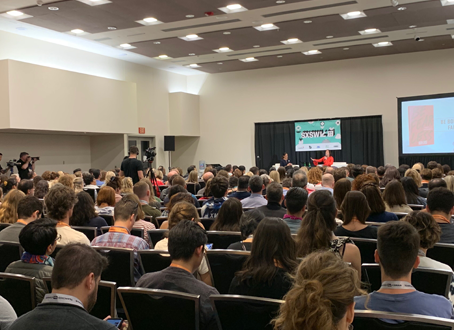The Case Foundation has worked over the last two years with data partners ImpactSpace and Crunchbase to develop the Impact Investing Network Map, an interactive tool showcasing the publicly available transactions between companies and investors within Impact Investing. We believe that by bringing the connections between actors to life—looking specifically at the investments that connect them—we can foster a better understanding of the size, breadth, depth, and, importantly, the enormous potential of this field.
Data visualization, the process of using graphics to express a dataset in an easily digestible format, drove the development of the Network Map. But not all data visualizations are created equally. From the beginning, we were cognizant that visualizing that much data in a helpful, easy to use way would be a large technological undertaking. When considering ways to showcase the relationships that make up the Impact Investing ecosystem, we pretty quickly determined that the functionality and design of a network graph—a type of visualization that illustrates points of data and their connections—would provide the best solution to conveying the incredibly complex relationship data we were working with. In our case, the points of data are companies and investors, and the connections are transactions. Choosing the right tools to help us visualize this data would be fundamental to the end product’s success. Tapping the knowledge of the team at Creative Science Labs, we decided that using Sigma.js, a JavaScript library dedicated to graph drawing, to display the map would give us the greatest level of performance. It would allow us to draw the many thousands of companies and investors in our dataset simultaneously without need for paging or artificial limiting of users’ search results.
But choosing the visualization library to build the Network Map in wasn’t our only technological roadblock. We know that we’re living in an increasingly mobile world, and in order to create a tool that would truly meet the needs of users, we needed to ensure it was mobile-first. To address the complications of a data visualization map on a mobile device, we chose to go with a table format to display relationships without sacrificing the richness of the data. This permits mobile users to explore the data of the map in a way best suited to the mobile experience where there is no mouse to provide the fine-point selection ability required by a network graph visualization.
Over two years of designing, coding, tweaking, testing and debugging, these technological bones have allowed us to build not only a beautiful tool, but one with incredible functionality and scalability that will allow it to grow with the Impact Investing sector as it advances. We have partnered with ImpactSpace and CrunchBase to utilize their API to pull in the data that we visualize, and in June of this year, launched the Beta version of the Impact Investing Network Map.
With the platform up and running, we’re excited to see how this technology is able to help the Impact Investing ecosystem come to life. However, we know that the network visualization needs more data to paint a more complete picture of the true scale of the Impact Investing ecosystem. That’s why we launched our #ShareYourData campaign, to encourage more actors to submit their data and join us in this effort. This presented us with the opportunity to learn about our potential users, how they interact with the Network Map, and what features they need for the Network Map to suit their needs.
As we embark on this data campaign, we are taking advantage of these early interactions with the Network Map to poll users and perform targeted analysis to better understand users’ experiences interacting with the Network Map. Through targeted questions, our goal is to understand with whom this tool primarily resonates and what additional features or changes they do—or do not—value. Our team actively gathers data on a weekly basis about engagement and session activities to identify pain points, and the team uses that data to guide the discussion on how to improve the tool. We’re learning an incredible amount from this and hoping that this early interaction with the Network Map helps actors in the Impact Investing sector to see the value of sharing their data publicly.
But we’re not done refining the tool yet. Like with any technology product, we know that learning from our users and improving functionality will be critical to the Network Map’s ultimate success.
Our next step is to engage in active user testing: we will work with a select group of individuals to perform a set of actions in the Network Map and provide specific feedback on their experiences performing those tasks and what could improve those experiences. Our team will use that information to build a potential roadmap for future iterations of the Network Map.
Does that sound like something you’d like to be involved with?
Great! We need your help.
If you are interested in becoming a Network Map tester, sign up at casefoundation.org//networkmap. You will be contacted in the coming weeks with further details on the testing program.





